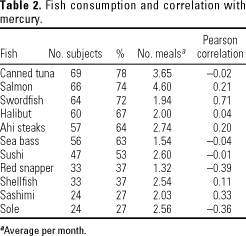

Description: Naegleria fowleri is a free-living excavate form of protist typically found in warm bodies of fresh water, such as ponds, lakes, rivers, and hot springs. It is also found in soil, near warm water discharges of industrial plants, and minimally chlorinated swimming pools.
- Flagellate stage: A biflagellate form occurring when trophozites are exposed to a change in ionic concentration such as placement in distilled water. The transformation of trophozoites to flagellate form occurs within a few minutes.
- Trophozoite stage: The reproductive stage of the protozoan organism, which grows fastest at around 42°C and proliferates by binary fission. The trophozoites are characterized by a nucleus and a surrounding halo. The trophozoites travel by pseudopodia, temporary round processes which fill with granular cytoplasm. The pseudopodia form at different points along the cell, thus allowing the trophozoite to change directions. In their free-living state, trophozoites feed on bacteria. In tissues, trophozoites phagocytize red blood cells and white blood cells and destroy tissue.
- Cyst Stage: Trophozoites encyst due to unfavorable conditions. Factors that induce cyst formation can include food deprivation, crowding, desiccation, accumulation of waste products, and cold temperatures. N. fowleri has been found to encyst at temperatures below 10°C.
Infection and Treatment: In humans, N. fowleri can invades the central nervous system via the nose. The penetration initially results in significant bleeding of the nasal passages. From there, amoebae climb along nerve fibers and into the brain. The amoebae begin to consume the cells of the brain using a unique sucker apparatus. It then becomes pathogenic, causing primary amoebic meningoencephalitis (PAM). PAM is a syndrome affecting the central nervous system, characterized by changes in olfactory perception (taste and smell), followed by vomiting, nausea, fever, headache, and the rapid onset of coma and death in two weeks. PAM usually occurs in healthy children or young adults with no prior history of immune compromise who have recently been exposed to bodies of fresh water. Amphotericin B is effective against N. fowleri in vitro, but the prognosis is not good for those that contract PAM, and survival remains less than 1%.
Video showing the Naegleria Flowleri in action: http://animal.discovery.com/videos/monsters-inside-me-the-brain-eating-amoeba.html
Life Cycle: Eggs of the parasite are emitted in the feces and into the water, where the eggs hatch. The hatching happens in response to temperature, light and dilution of feces with water. Once hatched, it searches for a suitable freshwater snail to act as an intermediate host and penetrates it. Following this, the parasite develops via a so-called mother-sporocyst and daughter-sporocyst generation to the cercaria. The purpose of the growth in the snail is the numerical multiplication of the parasite. From a single hatched egg, results a few thousand cercaria, every one of which is capable of infecting humans.
The cercaria emerge from the snail during daylight and they propel themselves in water and actively seek out their final host. When they recognize human skin, they penetrate it within a very short time. This occurs in three stages, an initial attachment to the skin, followed by the cercaria creeping over the skin searching for a suitable penetration site, often a hair follicle, and finally penetration of the skin into the epidermis using proteolytic secretions from the cercarial post-acetabular, then pre-acetabular glands. On penetration, the head of the cercaria transforms into an endoparasitic larva, the schistosomule. Each schistosomule spends a few days in the skin and then enters the circulation starting at the dermal lymphatics and venules. Here they feed on blood, regurgitating the haem as haemozoin. The schistosomule migrates to the lungs (5–7 days post-penetration) and then moves via circulation through the left side of the heart to the hepatoportal circulation (>15 days) where, if it meets a partner of the opposite sex, it develops into a sexually mature adult and the pair migrate to the mesenteric veins. Such pairings are monogamous.
Treatment: Diagnosis of infection is confirmed by the identification of eggs in stools. Currently there are two drugs available, Praziquantel and Oxamniquine, for the treatment of schistosomiasis.


Description: Ascaris lumbricoides is the giant roundworm of humans, belonging to the phylum
Nematoda. An ascarid nematode, it is responsible for the disease ascariasis in humans, and it is the largest and most common parasitic worm in humans. A quarter of the human population is estimated to be infected by this parasite. Ascariasis is prevalent worldwide and more so in tropical and subtropical countries.




 Global warming can be defined loosely as Earth's increase of near surface air and water temperature since the mid 20th century. Greenhouse gases, radiative forcing, and atmospheric CO2, as well as aerosols and soot and solar variation are known external forces that effect climate response. There are several views and controversies with global warming which stem through politics, public opinion and scientific knowledge. Many believe that population and humans in general show a direct link to the effect of climate change. While others feel that climate change is a natural effect that has no bearing on human interference.
Global warming can be defined loosely as Earth's increase of near surface air and water temperature since the mid 20th century. Greenhouse gases, radiative forcing, and atmospheric CO2, as well as aerosols and soot and solar variation are known external forces that effect climate response. There are several views and controversies with global warming which stem through politics, public opinion and scientific knowledge. Many believe that population and humans in general show a direct link to the effect of climate change. While others feel that climate change is a natural effect that has no bearing on human interference.








